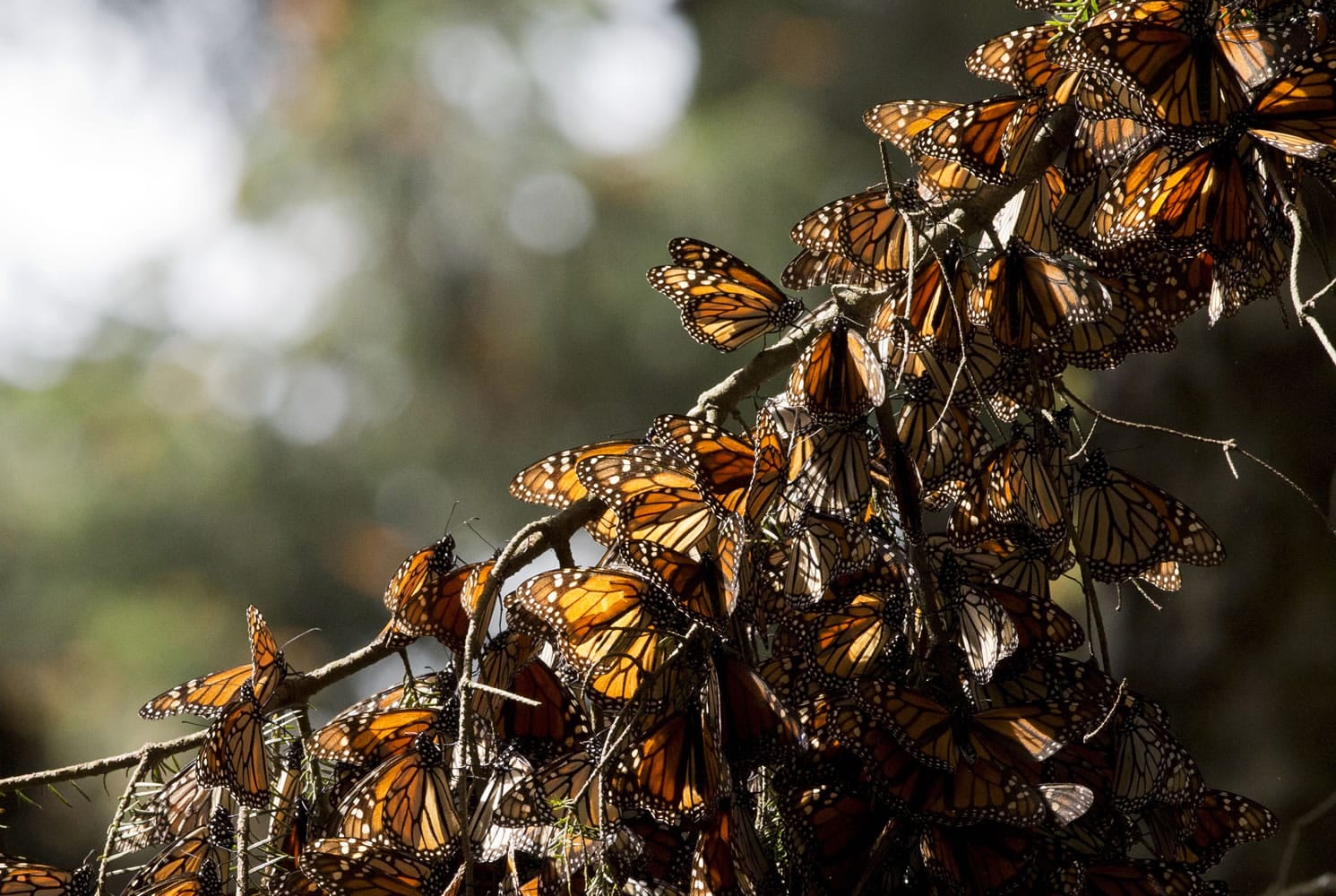MEXICO CITY — Illegal logging more than tripled in the monarch butterfly’s wintering grounds In central Mexico, reversing several years of steady improvements, investigators announced Tuesday.
Almost all of the loss occurred in just one rural hamlet in the state of Michoacan. Loggers cut down 47 acres of trees in San Felipe de los Alzati since last year’s gathering of butterflies. A total of 52 acres of forest in the reserve were lost overall, including losses due to drought or pests.
That’s the highest figure since 2009, well above the 20 acres lost in 2014, according to the announcement by the World Wildlife Fund and the Institute of Biology of Mexico’s National Autonomous University. The 2014 loss was about 12 acres due to logging and 8 acres to drought.
Illegal logging fell to almost zero in 2012, and experts stressed that 31 of the 32 communities in the reserve had kept logging down to very, very low levels.
The forest canopy is a sort of blanket against cold for the masses of orange-and-black butterflies that form huge clumps on tree branches during their winter stay in Mexico.
Loss of that habitat is just one of the threats to the butterflies’ amazing migration across Canada and the United States to Mexico. The migration is an inherited trait: No butterfly lives to make the full round-trip, and it is unclear how they find the route back to the same patch of pine forest each year. Some scientists suggest the butterflies may release chemicals marking the migratory path and fear that if their numbers fall too low, the chemical traces will not be strong enough for others to follow.
This year butterflies that reached the wintering grounds covered 2.79 acres, a 69 percent rebound from last February’s 1.65 acres, which was the lowest since record-keeping began in 1993. Butterflies cluster so closely together that they are counted by the area they cover, rather than by the number of individuals.
At their peak in 1996, the monarchs covered more than 44.5 acres in the mountains west of Mexico City. But the overall tendency since then has been a steep, progressive decline. Each time the monarchs rebound, they do so at lower levels. The species is found in many countries and is not in danger of extinction, but experts fear the migration could be disrupted if very few butterflies make the 3,400-mile trip.
Largely Indian farm communities in the mountain reserve have received government development funds in return for preserving the 139,000-acre reserve in the mountains west of Mexico City that UNESCO has declared a World Heritage site. Some of the communities earn income from tourist operations or reforestation nurseries to grow and plant saplings.



